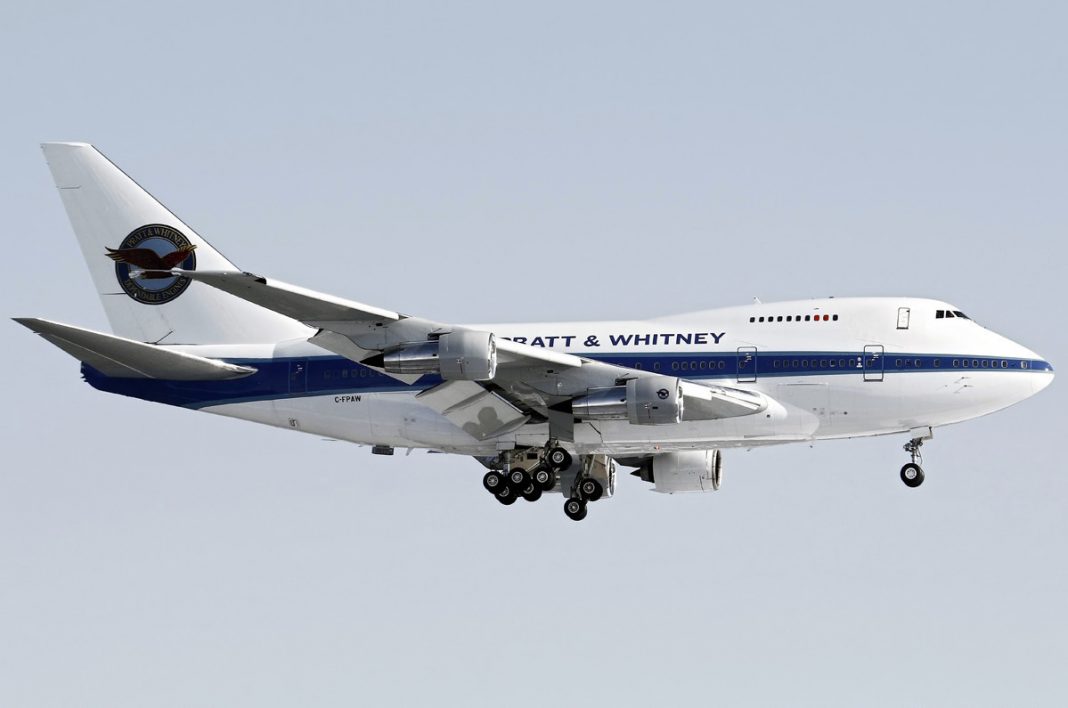Pratt & Whitney operate a Boeing 747 with a spare engine configuration that they can use to test conceptional engines in real-life flight conditions. What does the plane look like? And how is it used? Let us explore.

What is the Boeing 747 test aircraft?
You might have noticed a very odd-looking Boeing 747SP flying around the sky with five engines. But not five engines on the wing, but rather the fifth engine on a separate wing up near the 747 bubble.
This is the Pratt & Whitney Boeing 747SP testbed aircraft, used to test conceptual engine designs before entering full manufacturing. P&W has two of these Boeing 747SP’s (the smallest Boeing 747) that they use for real-world flight testing. For the engines to receive approval for use, they need tests done in uncontrollable conditions such as temperature variations and providing thrust at speed.
“These are things that are very difficult or impossible to do on the ground,” a test bed pilot at GE explains, “You can’t define airplane engine performance unless you’re in flight at different altitudes and Mach numbers.”
You can watch the aircraft in flight in this overdramatic video:
Inside the plane, the interior does not have the standard three-class layout familiar to most commercial aircraft. Rather the plane has used the space for several different workstations for different flight test engineers. Each station measures different engine results and can update settings on the fly to configure the new engine best.
These tests can sometimes take up to eight hours (replicating a standard commercial flight); thus, the aircraft is as comfortable as possible.
Previously the firm would use a different 747 and replace one of the four engines (or place it in the ‘fifth pod’ position that Qantas would use to transport engines), which had some disadvantages over this new fifth engine design.
Pratt & Whitney recently used this test bed for engines for the Airbus A220, Airbus A320neo, Embraer E-Jets E2, Irkut MC-21, and the Mitsubishi SpaceJet.
What other test bed aircraft are there?
Pratt & Whitney is not the only engine manufacture who operates unusual aircraft for engine testing.
Rolls-Royce also has plans to operate a Boeing 747 for engine testing with a similar engine set up. They recently made headlines when they proposed acquiring a retiring Qantas 747 for the task.

General Electric also uses the Boeing 747 series for tests. The last engine that they tested was the new GE9X for the Boeing 777X.

Ironically, these aircraft for GE (acquired from the bankruptcy of Pan Am) have Pratt & Whitney engines. No one operating Boeing 747s at the time wanted to part with a GE 747 (and its engines), so this rival has been testing new engines using Pratt & Whitney.
Lastly, we should mention the Honeywell Boeing 757-200 that tests smaller engines for the aerospace firm. It is also equipped with a stub wing next to the front door and has even tested a turboprop in the past.

What do you think of this design? Let us know in the comments.
[ad_2]
Source link


